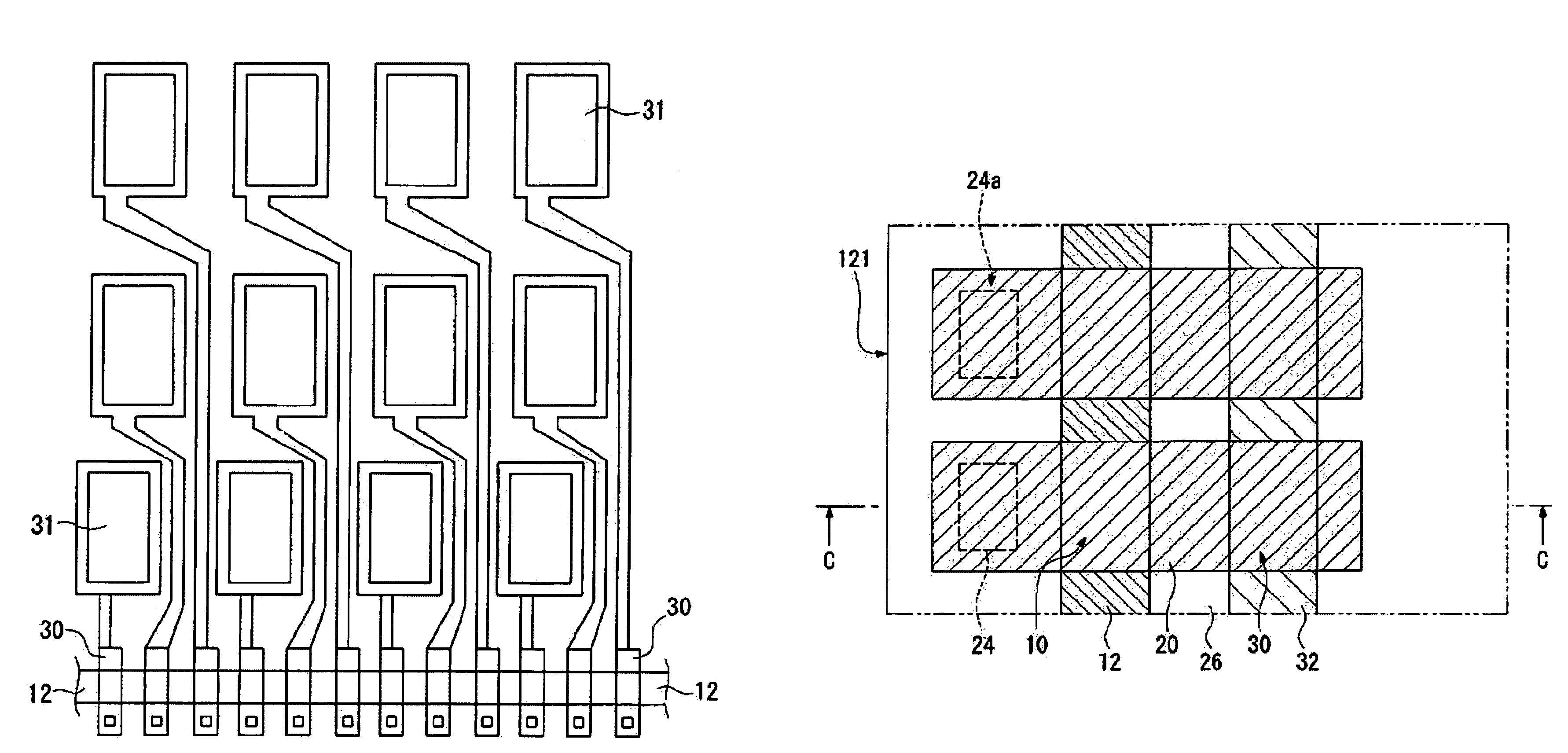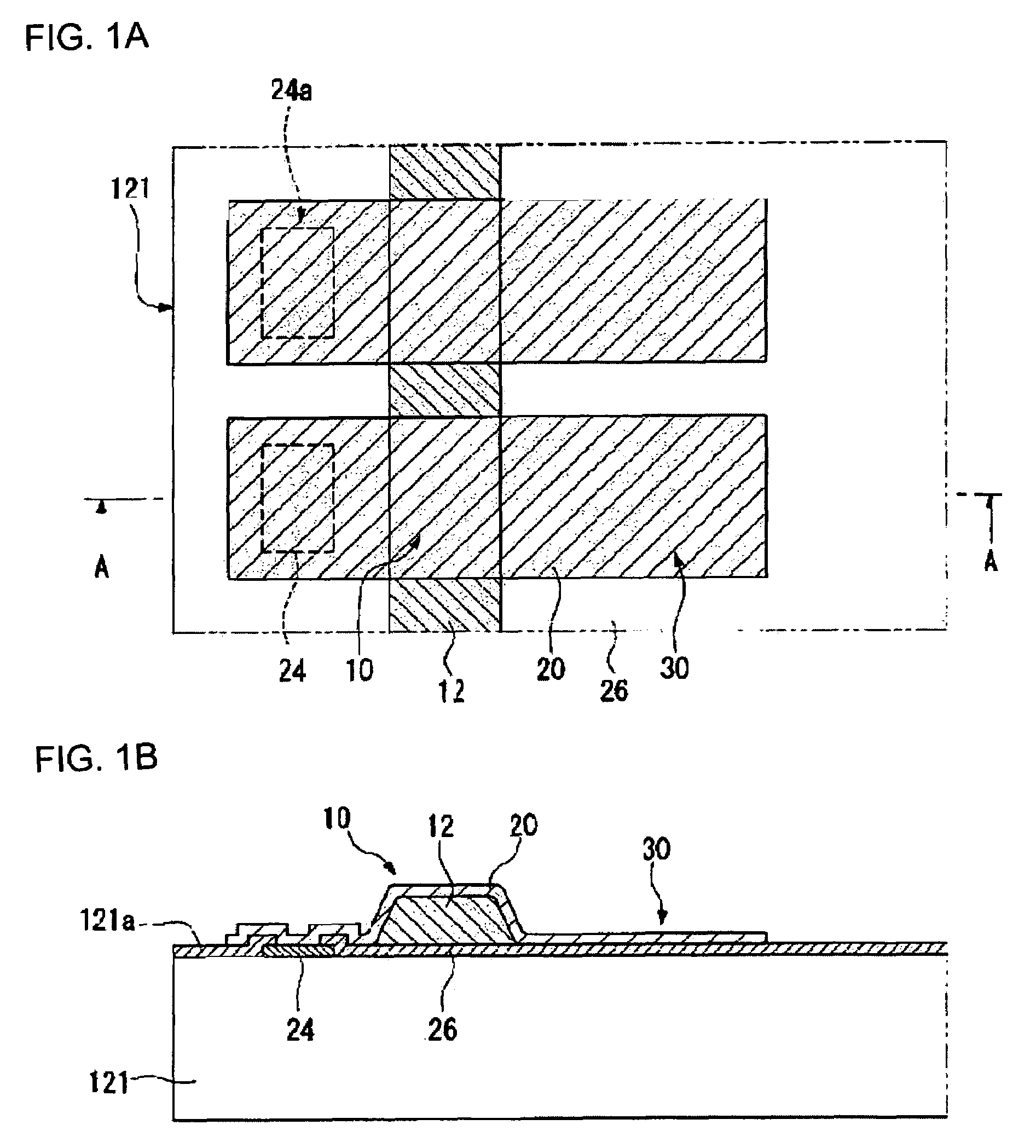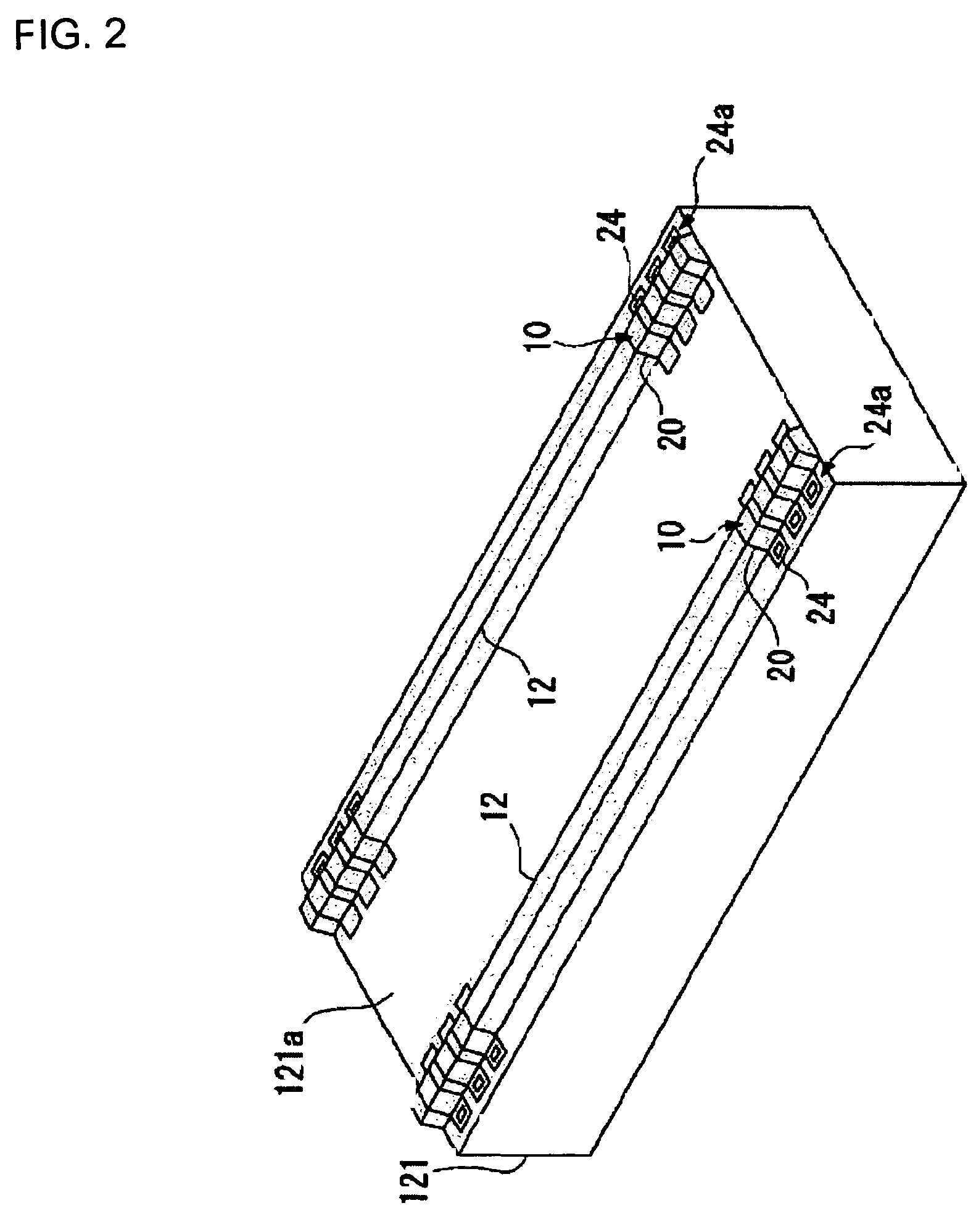Semiconductor device, circuit substrate, electro-optic device and electronic appliance
a technology of electrooptic devices and semiconductors, applied in the direction of semiconductor/solid-state device details, radiation controlled devices, instruments, etc., can solve the problems of difficult to absorb the warpage of ic chips as well as glass substrates, difficult to cope with the narrowing of bump electrode pitch, and scratched the top part of them, etc., to achieve high-reliability conductive connections
- Summary
- Abstract
- Description
- Claims
- Application Information
AI Technical Summary
Benefits of technology
Problems solved by technology
Method used
Image
Examples
first embodiment
THE FIRST EMBODIMENT
[0044]First, the first embodiment of the present invention is described using FIG. 1 through FIG. 3.
[0045]FIG. 1 is an explanatory drawing of the semiconductor device in the first embodiment. A semiconductor device 121 in the first embodiment includes: an electrode pad 24 and a resin projection 12 formed on an active surface 121a; a conductive film 20 deposited from a surface of the electrode pad 24 to a surface of the resin projection 12; and a resin bump 10 is formed with the resin projection 12 and with the conductive film 20. Further, a testing electrode 30 is formed with the conductive film 20 that is extended and applied to the opposite side of the electrode pad 24.
[0046]The Semiconductor Device
[0047]FIG. 2 is an oblique drawing of the semiconductor device in the first embodiment. The semiconductor device 121 has, for example, an IC chip that drives the picture element of the liquid crystal display device. Under its active surface, a plurality of electric e...
second embodiment
THE SECOND EMBODIMENT
[0062]Hereafter, the semiconductor device in the second embodiment of the present invention is described using FIG. 4.
[0063]FIG. 4 is an explanatory drawing of the semiconductor device in the second embodiment. FIG. 4A is a magnified top view drawing of the periphery of the resin bump electrode 10, and FIG. 4B is a sectional side view drawing of the section B-B line in FIG. 4A. As shown in FIG. 4, in the semiconductor device 121 in the second embodiment, a resin layer 32 is formed in the inner side of the array of electrode pads 24a on the active surface 121a. On the surface of the resin layer 32, the resin projection 12 is formed. The conductive film 20 is extended and applied, from the electrode pad 24 to its opposite side across the resin projection 12, and the conductive film 20 is deposited on the surface of the resin layer 32. Hence the testing electrode 30 is formed. Here, the detailed description is omitted for the part that has same structure as that of...
third embodiment
THE THIRD EMBODIMENT
[0069]Hereafter, the semiconductor device in the third embodiment of the present invention is described using FIG. 5.
[0070]FIG. 5 is an explanatory drawing of the semiconductor device in the third embodiment. FIG. 5A is a magnified top view drawing of the periphery of the resin bump electrode 10, and FIG. 5B is a sectional side view drawing of the section C-C line in FIG. 5A. As shown in FIG. 5, in the semiconductor device 121 in the third embodiment, the resin projection 12 is formed in the inner side of the array of electrode pads 24a on the active surface 121a. The resin layer 32 is formed in the inner side of the resin projection 12 on the active surface 121a. The conductive film 20 is extended and applied, from the electrode pad 24 to its opposite side across the resin projection 12, and that conductive film 20 is deposited on the surface of the resin layer 32. Thus the testing electrode 30 is formed. Here, the detailed description is omitted for the part th...
PUM
| Property | Measurement | Unit |
|---|---|---|
| thickness | aaaaa | aaaaa |
| conductive | aaaaa | aaaaa |
| photosensitive | aaaaa | aaaaa |
Abstract
Description
Claims
Application Information
 Login to View More
Login to View More - R&D
- Intellectual Property
- Life Sciences
- Materials
- Tech Scout
- Unparalleled Data Quality
- Higher Quality Content
- 60% Fewer Hallucinations
Browse by: Latest US Patents, China's latest patents, Technical Efficacy Thesaurus, Application Domain, Technology Topic, Popular Technical Reports.
© 2025 PatSnap. All rights reserved.Legal|Privacy policy|Modern Slavery Act Transparency Statement|Sitemap|About US| Contact US: help@patsnap.com



